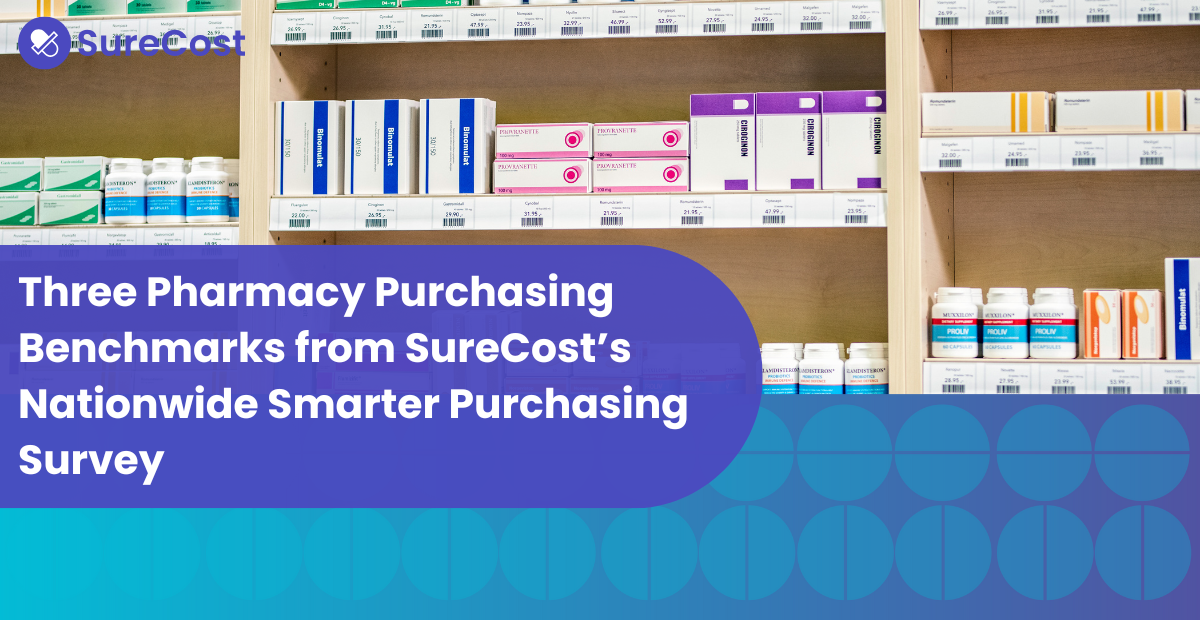The pharmacy industry is facing unprecedented challenges that threaten its profitability and sustainability. Rising drug prices, increased competition, and stringent regulatory requirements have created a perfect storm, making it harder for pharmacies to maintain healthy profit margins.
In this difficult macro environment, finding ways to reduce costs and improve efficiency is crucial. One area where pharmacies can make a significant impact is in their purchasing and inventory management processes.
The Purchasing Predicament
Pharmacies deal with a vast array of products, each with varying prices and availability. The complexity of managing these purchases can lead to inefficiencies and increased costs. The top three common issues we’ve seen are:
- Lack of Transparency: Often, pharmacies struggle with a lack of visibility into the most cost-effective purchasing options. Without comprehensive data, it's challenging to compare prices and terms from different suppliers.
- Inconsistent Pricing: Prices for medications and supplies can fluctuate frequently. Without a system in place to track these changes, pharmacies may end up overpaying for their stock.
- Vendor Relationships: Maintaining and managing relationships with multiple vendors can be cumbersome and time-consuming. Negotiating better terms and ensuring timely deliveries adds to the administrative burden.
Compliance Challenges
Pharmacies must adhere to a myriad of regulations to ensure patient safety and avoid penalties. Compliance issues often arise due to:
- Regulatory Changes: Keeping up with the constantly evolving regulations at federal, state, and local levels is challenging. Pharmacies need to stay updated to avoid costly fines and ensure they are meeting all legal requirements.
- Documentation: Proper documentation and reporting are critical for compliance. This involves maintaining accurate records of purchases, inventory, and sales, which can be labor-intensive and prone to errors when done manually.
- Audits: Pharmacies are subject to regular audits, which can be stressful and disruptive. Being prepared with accurate and easily accessible records is essential to pass these audits smoothly, especially for DSCSA.
Inventory Management Issues
Effective inventory management is crucial for pharmacies to ensure they have the right medications in stock while minimizing waste and overstock. Challenges in this area include:
- Stockouts: Running out of essential medications can harm patient care and lead to lost sales. Poor inventory management practices can result in stockouts and disappointed patients.
- Overstock: Conversely, overstocking ties up valuable capital and increases the risk of medications expiring before they can be sold. Balancing inventory levels is a delicate act that requires precise data and forecasting.
- Inventory Shrinkage: Loss of inventory due to theft, damage, or administrative errors can significantly impact profitability. Implementing robust inventory tracking systems is vital to minimize shrinkage.
Leveraging Technology for Smarter Purchasing
To navigate these challenges, pharmacies need to adopt modern solutions that streamline their purchasing, compliance, and inventory management processes. A technology that focuses on automation can provide numerous benefits, such as:
- Enhanced Visibility: With automated systems, pharmacies can gain real-time insights into pricing and availability from multiple suppliers. This transparency allows for more informed purchasing decisions and helps secure the best deals.
- Consistent Pricing: Automated solutions can track price fluctuations and alert pharmacies to changes, ensuring they always purchase at the most competitive rates. This helps avoid overpaying and enhances profit margins.
- Simplified Supplier Management: Technology can consolidate supplier information and streamline communications, making it easier to negotiate terms and manage relationships effectively. This reduces administrative workload and improves supply chain efficiency.
- Regulatory Compliance: Automated systems can keep pharmacies updated with the latest regulatory changes and ensure all documentation is accurately maintained. This minimizes the risk of non-compliance and simplifies the audit process.
- Optimized Inventory: Advanced inventory management tools use data analytics to predict demand accurately and maintain optimal stock levels. This reduces the risk of stockouts and overstock, freeing up capital and ensuring better service for patients.
- Reduced Shrinkage: Implementing technology-driven inventory tracking helps minimize losses due to theft, damage, or errors. This enhances overall profitability and operational efficiency.
Pharmacies across the United States often base their purchasing decisions on the list of the 200 most commonly prescribed medications. This "Top 200" list helps them anticipate demand and ensure they have the right products in stock. While this approach may seem practical, it doesn't always offer the best purchasing options.
A platform solution like SureCost helps pharmacies expand their purchasing decisions beyond the Top 200 to unlock significant savings opportunities.
Pharmacies can access a wider range of options in a less competitive market, reducing their cost of goods sold (COGS) by approximately 11% on average. In 2023, retail pharmacies that purchased more frequently outside the Top 200 enjoyed even lower COGS compared to long-term care (LTC) pharmacies.
Pharmacies are facing significant pressures on their profit margins due to rising costs, regulatory demands, and inventory management challenges. But if they learn to leverage advanced technology solutions like SureCost that focus on automation, pharmacies can streamline their operations, reduce costs, and stay competitive in an increasingly tough market. Embracing smarter purchasing strategies is a critical step toward achieving greater efficiency, compliance, and profitability.
.png?w=500)



.png)



